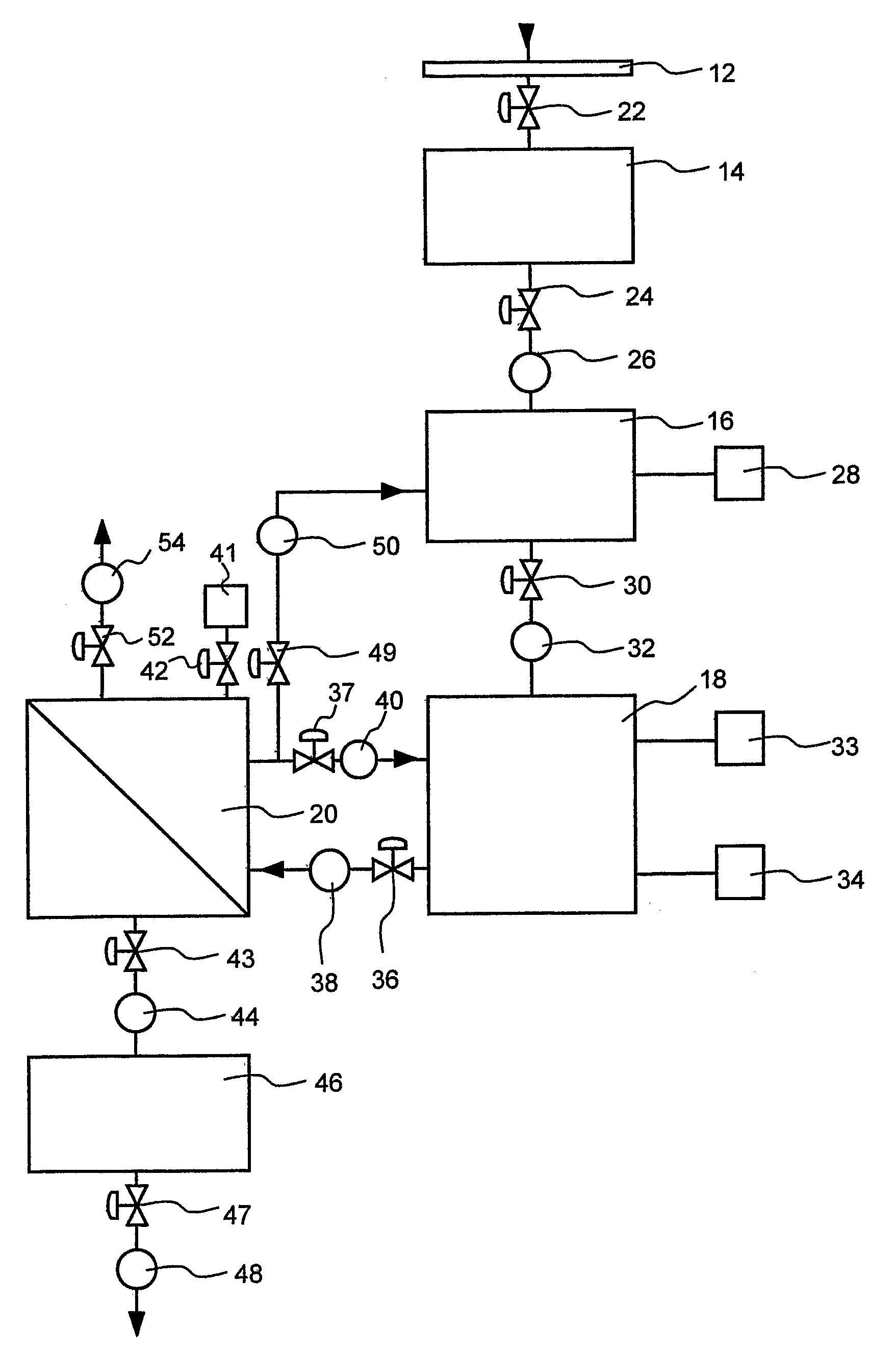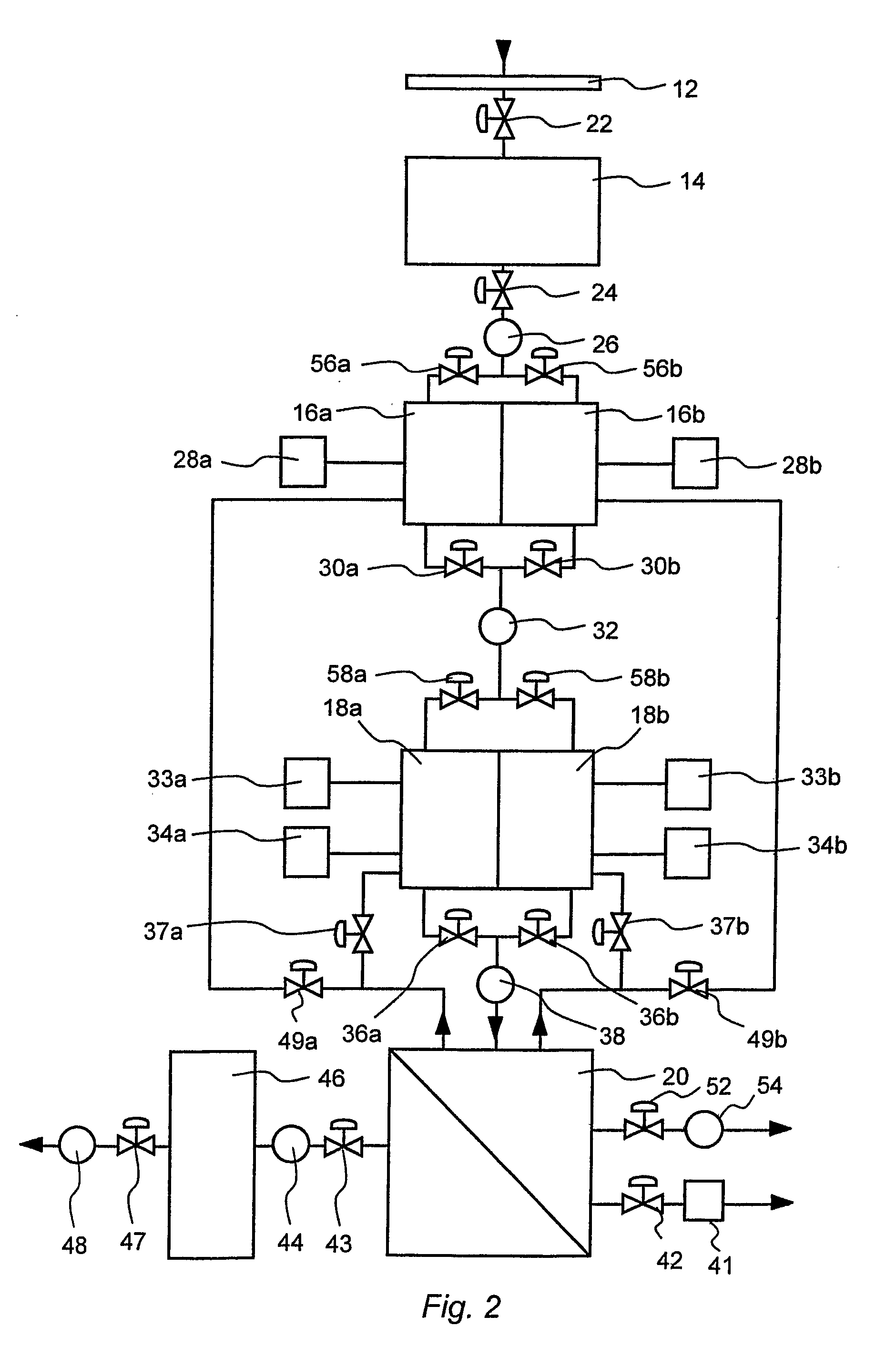Wastewater Treatment Method and System
- Summary
- Abstract
- Description
- Claims
- Application Information
AI Technical Summary
Benefits of technology
Problems solved by technology
Method used
Image
Examples
first embodiment
[0093]FIG. 2 illustrates another embodiment of the present invention, where like reference numerals denote like parts. This embodiment employs the use of two anaerobic tanks 16a,b and two SBR tanks 18a,b, and associated pumps valves and mixers. Additional anaerobic tank inlet diverter valves 56a,b and SBR tank inlet diverter valves 58a,b are required in this embodiment to ensure separation of flow of waste streams between the two anaerobic tanks 16a,b and two SBR tanks 18a,b. In this embodiment, a primary 8-hour cycle stream is performed via anaerobic tank 16a and SBR tank 18a, and a secondary 8 hour cycle stream is performed via anaerobic tank 16b and SBR tank 18b. The primary and secondary cycle streams run practically identically to each other and follow the same preliminary anaerobic contact, SBR and filtration phases as described above with respect to the first embodiment, however they run 4 hours out of phase with each another. In this way only one filtration unit 20 is requir...
second embodiment
[0094]Under the above time periods, the anaerobic tank 16, or 16a,b stores at least some liquid for about 5.5 to 6.0 hours, including introducing mixed liquor to the tank 16, or 16a,b prior to the preliminary anaerobic contact phase, the preliminary anaerobic contact phase, and the first to part of the fourth SBR phases. That is, the anaerobic tank 16, or 16a,b stores at least some liquid for more than half of each cycle. For this reason, two anaerobic tanks are required in the above-described As will be understood, the above time periods can be altered depending on the type of waste stream, the volume of each portion of anaerobically treated wastewater introduced into the SBR tank 18, or 18a,b, and the quality requirements of the output filtrate. In another embodiment, therefore, one anaerobic tank and two SBR tanks, and associated pumps valves and mixers, are used. In this embodiment, a primary 8 hour cycle stream is performed via the one anaerobic tank and a first one of the SBR...
PUM
| Property | Measurement | Unit |
|---|---|---|
| Volume | aaaaa | aaaaa |
Abstract
Description
Claims
Application Information
 Login to View More
Login to View More - R&D
- Intellectual Property
- Life Sciences
- Materials
- Tech Scout
- Unparalleled Data Quality
- Higher Quality Content
- 60% Fewer Hallucinations
Browse by: Latest US Patents, China's latest patents, Technical Efficacy Thesaurus, Application Domain, Technology Topic, Popular Technical Reports.
© 2025 PatSnap. All rights reserved.Legal|Privacy policy|Modern Slavery Act Transparency Statement|Sitemap|About US| Contact US: help@patsnap.com



